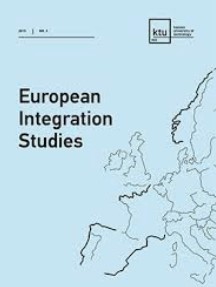Tax Incentives as a Part of Governments’ Applied Mechanisms for the Third Pension Pillar in Estonia, Latvia, and Lithuania
Tax Incentives as a Part of Governments’ Applied Mechanisms for the Third Pension Pillar in Estonia, Latvia, and Lithuania
Author(s): Evija Dundure, Biruta SlokaSubject(s): Government/Political systems, Comparative politics, Public Finances, Fiscal Politics / Budgeting, Socio-Economic Research
Published by: Exeley Inc.
Keywords: government; pensions; tax incentives; third pension pillar; voluntary savings;
Summary/Abstract: The main objective of the improvements to public pension systems is to create a balanced three-pillar pension structure and increase public accountability for pension capital formation. Most pension systems are based on the first two pension system pillars – mandatory contributions in the state compulsory unfunded pension scheme and the state-funded or accumulated pension scheme in pension funds. However, the pension level adequacy has been reached by adding the third pension system pillar – voluntary investments in private pension funds. Governments are private pension system policymakers by defining a legal framework and providing tax incentives for voluntary investments for retirement. In the Baltic countries – Estonia, Latvia, and Lithuania, the third pension pillar is at an early stage of its development, and as such, should be particularly stimulated. This research focuses on the tax incentives utilized by the governments of Estonia, Latvia, and Lithuania and aims to ascertain and compare the effectiveness of the tax incentive policies applied to the third pension pillar by the governments of the three Baltic countries. It questions the effectiveness of the incentive mechanisms the governments of the Baltic countries have chosen, which include involving most of the population in the private pension saving programs. The research methods used are the analysis of scientific publications on the previously conducted research, acts of legislation of Baltic countries, as well as an analytical study of statistical data on the development of voluntary pension fund contributions in Estonia, Latvia, and Lithuania. The research results indicate that the tax incentives are the mechanism to motivate the population to create savings in the third pension pillar in all three Baltic countries. However, Latvia being the country with the highest coverage rate of the third pension pillar has the most unfavorable conditions for creating savings. There are no tax incentives on returns on investment and tax-exempt withdrawals in Latvia, while Estonia and Lithuania have all positions tax-exempt.
Journal: European Integration Studies
- Issue Year: 14/2020
- Issue No: 1
- Page Range: 146-155
- Page Count: 10
- Language: English

